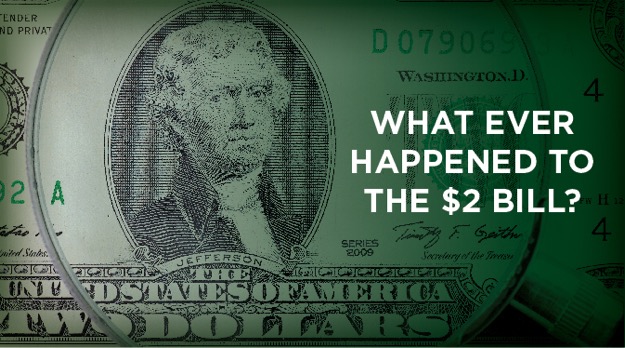When was the last time you saw a $2 bill? Known as “Toms” because of Thomas Jefferson’s portrait, these bills were once more common, yet have since become rare. Despite being a cost-effective form of currency, the $2 bill never gained widespread use, leading the government to halt its production. In this article, we’ll uncover the story behind the decline of the $2 bill and explore its implications on broader financial strategies, including the Perpetual Wealth Strategy™.
The History of the $2 Bill
The $2 bill was introduced in 1862, at a time when paper currency was still a relatively new concept in the United States. As paper money became more commonly used, it was designed to fill a gap between the $1 bill and the $5 bill. However, the role of the $2 bill became unclear over time, particularly during the Great Depression.
- Price range challenge: The $2 bill ended up in an awkward spot—too much for minor purchases, but not enough to justify its continued use. People found it inconvenient for small daily expenses, and it wasn’t quite valuable enough for larger transactions.
Government Efficiency
Interestingly, the $2 bill proved to be more cost-effective for the government to produce than the $1 bill.
- Lower production costs: Producing fewer $2 bills could achieve the same monetary outcome as printing more $1 bills, making it a more efficient choice for the government.
- Efficiency vs. popularity: Despite this, the bill’s limited use and lack of demand led to its eventual decline. The $2 bill remained less popular, and over time, became rare in daily transactions.
The Return of the $2 Bill
Despite its earlier decline, the $2 bill made a return in 1976, when the U.S. Treasury decided to print a special edition in honor of the country’s bicentennial. The new bills featured a large illustration of the signing of the Declaration of Independence on the back, and 400 million of these were printed, marking a brief resurgence for the bill.
- Cost-effective production: Interestingly, the $2 bill was more cost-efficient for the government to produce than the $1 bill. Because it was printed in smaller quantities, the $2 bill saved the government money, producing the same value with fewer bills. However, its appeal never fully returned to everyday transactions.
- Collector’s item: While the bicentennial $2 bills were produced in large numbers, they became more of a collector’s item than a practical form of currency. Many people held onto them as keepsakes, and they slowly transitioned to a rare currency used more for novelty than regular exchange.
Value of the $2 Bill
So, are $2 bills rare today? Despite being in circulation, $2 bills are considered the rarest form of U.S. currency. Modern $2 bills still hold their face value of $2, but most of the $2 bills in circulation are bicentennial editions, and they are mostly used as keepsakes or collector’s items.
- Collector’s value: While newer $2 bills hold little to no additional value, the bicentennial $2 bills have become valuable to collectors. Some have even sold for as much as $50,000 at auction, especially if they are in pristine condition or feature unique characteristics.
- Current circulation: As of today, there are about 1.2 billion $2 bills in circulation. However, this still represents less than 0.001% of the total U.S. currency in circulation. $1 bills remain far more prevalent, with over 3 billion printed in the same period that only 75 million $2 bills were made.
The Federal Reserve and the $2 Bill
The Federal Reserve plays a critical role in managing the money supply and determining how much currency is printed, including the $2 bill. While the $2 bill was a cost-effective option for the government to print, the Federal Reserve has the final say on whether it makes sense to keep producing it.
- Money supply management: The Federal Reserve has the power to influence inflation, interest rates, and the overall economy by adjusting the money supply. By managing which denominations are printed and in what quantities, they help balance the needs of the economy with the production of currency.
- Economic impact: Decisions made by the Federal Reserve about money supply directly impact inflation, interest rates, and the value of the dollar—factors that affect your personal wealth. Understanding how these decisions influence your finances is a critical part of managing and building wealth.
The Federal Reserve controls the creation of money in the U.S. and adjusts interest rates, influencing the economy. To learn more about how the Fed impacts your finances, check out our blog, A Quick Look at the Fed and How It Impacts You, or visit the Mises Institute and the Foundation for Economic Education.
Protecting and Growing Your Wealth
Just like the $2 bill, your money is vulnerable to economic shifts, inflation, and changes in supply and demand. Understanding these dynamics is essential for anyone committed to building and protecting wealth. The Perpetual Wealth Strategy™ provides a comprehensive approach to managing your finances, focusing on maximizing cash flow, protection, and wealth-building. This strategy helps you safeguard your financial future, regardless of what happens in the economy.
- Long-term planning: By following the principles of the Perpetual Wealth Strategy™, you can strategically protect your wealth while growing it through intelligent investments, leveraging whole life insurance, and building financial resilience that withstands external factors like inflation and market volatility.
- Taking control: The strategy encourages proactive financial decisions that align with your goals, ensuring your wealth works for you—today and in the future. By securing assets and planning for the long term, you can weather economic changes and leave a legacy for future generations.
What Does the Federal Reserve Have to Do with the $2 Bill?
The Federal Reserve plays a critical role in managing the money supply and determining how much currency is printed, including the $2 bill. While the $2 bill was a cost-effective option for the government to print, the Federal Reserve has the final say on whether it makes sense to keep producing it.
- Money supply management: The Federal Reserve has the power to influence inflation, interest rates, and the overall economy by adjusting the money supply. By managing which denominations are printed and in what quantities, they help balance the needs of the economy with the production of currency.
- Economic impact: Decisions made by the Federal Reserve about money supply directly impact inflation, interest rates, and the value of the dollar—factors that affect your personal wealth. Understanding how these decisions influence your finances is a critical part of managing and building wealth.
FAQs
Why did the $2 bill gain a bad reputation?
The $2 bill gained a bad reputation due to its association with scandalous activities like bribery, gambling, and other underhanded dealings. During certain periods in history, the bill was more frequently used in shady transactions, leading to its negative cultural perception. This perception contributed to its decline in everyday use, and it eventually became a rare currency largely kept for collector’s purposes.
How does the decline of the $2 bill relate to personal wealth management?
The decline of the $2 bill is a powerful reminder that economic shifts, inflation, and changing market conditions can influence the value and effectiveness of currency. Just as the $2 bill struggled to maintain its relevance, personal wealth can be diminished if not actively managed. The Perpetual Wealth Strategy™ helps you build wealth that adapts to these changes, ensuring your resources continue to grow despite external forces.
Are $2 bills still being printed today?
Yes, $2 bills are still being printed, though in limited quantities. While 1.2 billion $2 bills are in circulation, they make up less than 0.001% of total U.S. currency. The Federal Reserve manages their production based on demand, although they are seen more as collector’s items than everyday currency.
Why is the $2 bill considered rare?
The $2 bill is rare due to its limited use in daily transactions. After its introduction, it never gained widespread popularity, and with inflation and a shift in public perception, it gradually became less practical. The $2 bill’s rarity is partly due to cultural associations and the practicality of other denominations overtaking it.
How can understanding the history of the $2 bill help with personal financial planning?
The $2 bill’s history teaches us how economic changes, inflation, and cultural perceptions can affect the value of assets, both physical and financial. Just like currency, your personal wealth can fluctuate due to external factors. The Perpetual Wealth Strategy™ teaches you to diversify and protect your assets, ensuring you build wealth that withstands inflation and market volatility.
How does the value of the $2 bill fluctuate in the market?
While the $2 bill has little extra value in circulation, certain editions, such as the bicentennial $2 bill, can become highly valuable in the collector’s market. Bills in pristine condition, or those with unique serial numbers or historical significance, can be sold at auction for as much as $50,000. These fluctuations highlight how value is often determined by demand and rarity, factors that can be crucial in wealth-building and investment planning.
What are the long-term effects of inflation on currency like the $2 bill?
Inflation erodes the purchasing power of all currencies, including the $2 bill. As inflation drives up prices, the $2 bill becomes less practical, and people turn to higher denominations for everyday purchases. Similarly, understanding how inflation affects wealth is essential for long-term financial planning. Using assets like life insurance and investment products that grow in value over time helps preserve wealth and protect against inflation.
How does the Federal Reserve affect the value of the $2 bill?
The Federal Reserve controls the supply of money in circulation, including the $2 bill. By adjusting interest rates and the money supply, the Fed influences the value of currency, including smaller denominations like the $2 bill. Similarly, financial decisions you make—such as investing in whole life insurance—can help protect your wealth from fluctuations caused by the Fed’s policies, ensuring your money works for you in a stable, predictable way.
Can I still use a $2 bill today, or is it just for collectors?
You can still use $2 bills as legal tender, and they hold their face value of $2, just like any other U.S. currency. However, the $2 bill is more often kept as a novelty or collector’s item due to its rarity in circulation. Despite this, they remain an interesting part of U.S. currency history. Similarly, investing in assets like whole life insurance allows you to use your wealth for long-term financial security while also preserving your assets for the future.
What’s the best way to protect my wealth from market fluctuations, similar to the $2 bill’s decline?
To protect your wealth from market fluctuations—similar to the decline of the $2 bill—it’s crucial to diversify your assets and focus on wealth-building tools that offer guaranteed growth and stability. The Perpetual Wealth Strategy™ integrates whole life insurance, which provides a tax-deferred growth component that grows steadily over time, independent of the stock market. By focusing on wealth preservation and avoiding excessive risk, you ensure your wealth remains intact through all types of economic shifts.







